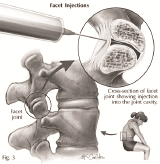Removal of your PEG (Percutaneous Endoscopic Gastrostomy)
This page is for patients whose doctor has requested that you have your PEG (percutaneous endoscopic gastrostomy) tube removed. We hope the following information will answer some of the questions you may have about this procedure.
Why does my PEG need to be removed?
It could be that your dietician/doctor has decided that you are now able to take sufficient food orally. Alternatively it might be because your tube is not functioning correctly, therefore it needs to be changed.
How is the PEG removed?
The PEG is held in place inside your stomach by a circular piece of plastic (the internal flange) about the size of a 10 pence coin. This is what stops it being accidentally pulled out. Because of this piece of plastic it is not possible to remove your tube by pulling it from the outside. PEG tubes can be removed endoscopically, however, for some patients this method is not always possible. In your case it is necessary to use another way to remove the PEG. This is the “cut and push” method. The PEG tube is cut away close to the skin on the outside and the circular piece of plastic (the internal flange) is pushed into your stomach.
What are the risks associated with a PEG removal?
There is a small risk that the internal flange could get stuck somewhere in the stomach or bowel. This could cause an obstruction and require another procedure.
If you experience any vomiting, abdominal pain or constipation in the days following the procedure contact your GP and let him/her know that you have recently had a PEG removed by the “cut and push” method. If you are feeling very unwell you should go directly to your nearest Emergency Department.
The procedure uses X-rays and the amount of radiation used is small, however if you think you may be pregnant please inform the Imaging Department before attending the appointment.
On the day of the procedure
- You should not eat or drink anything for 6 hours before your appointment.
- You may take your normal medication unless instructed otherwise.
- You will arrive at the Imaging Department (Gate 19) and be accompanied into our day case area. Please inform us if you are allergic to anything.
- You will be asked to change into a hospital gown and a cannula (a small tube) will be placed in a vein in your arm for pain relief if needed.
- The interventional radiologist will discuss the procedure with you. You will have an opportunity to ask questions about the procedure and your treatment. If you choose to have the procedure you will need to sign a consent form.
- Once all the checks have been performed and a consent form signed, you will be taken to the angiography suite (X-ray room) on the trolley. There will be a radiologist, nurses and a radiographer with you throughout the procedure.
- You will be asked to lie on your back on the X-ray table.
- The skin around the PEG tube will be cleaned with an antiseptic solution and covered with a drape.
- The PEG tube is then cut close to the skin on your stomach and the circular piece of plastic is then pushed into your stomach.
- If you still need a tube for feeding then a new replacement tube will be inserted into the hole immediately following the “cut and push”. This procedure will be similar to when the PEG was initially fitted and will be discussed with you.
What happens after the procedure?
At first, when the PEG is removed some patients experience a small amount of leaking of fluid - but the hole in the stomach wall usually heals within 24 hours and the hole in the skin within a few days.
You will be given a small dressing to use for the first few days. You may take a shower straight away however, we advise that you wait 24 hours before taking a bath.
Once the procedure has been completed, the internal flange will pass through your system and leave through your bowels when you go to the toilet. It’s painless and most people do not realise that the flange has been passed.
Finally we hope this information is helpful. If you have any questions either before or after the procedure the staff in the Imaging Department will be happy to answer them. The phone number can be found on your appointment letter.
Reference
Queen Elizabeth Hospital Birmingham (2016) “’Cut and Push’ removal of a Freka Applix Percutaneous Endoscopic Gastrostomy (PEG)”
© North Bristol NHS Trust. This edition published January 2024. Review due January 2027. NBT003258


